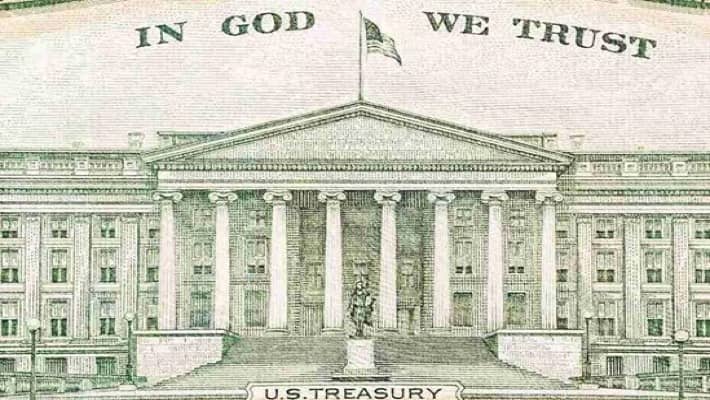Friday Dec 1 2023 07:33

10 min
Few people may be aware of the origins and evolution of savings bonds. Understanding the history provides helpful context on how and why savings bonds work the way they do today.
Learn the timeline of US savings bonds using this detailed guide. Their evolution mirrors the nation’s economic journey, making them not just an investment tool but also a historical artefact worth learning.

Savings bonds are debt securities issued by the United States Department of the Treasury to help finance federal government spending. When you purchase a savings bond, you loan money to the US government. In exchange, they promise to pay you back the amount you invested (the principal) plus a specified amount of interest over a set period.
Savings bonds are considered very low-risk investments since the full faith and credit of the US government backs them. They can be a great option for conservative investors looking for a virtually risk-free way to accumulate interest on savings.
For an in-depth look, refer to this article: What Is A Bond?
The basic concept behind savings bonds of lending money at interest in return for future repayment has existed for thousands of years. Some of the earliest known evidence comes from ancient Mesopotamia in 3000 BC - 1800 BC. Back then, merchants would often lend grain or other commodities to farmers or traders in exchange for getting back higher amounts at later dates.
In ancient Rome, lending became more formalised. Wealthy individuals would provide loans to the government to help finance wars, building projects, and various public expenses. They were paid back with interest. Similarly, in Medieval Europe, wealthy citizens would buy government bonds that paid annual interest. The government gained access to funding, while the bondholders profited from the interest.
These early precursors eventually evolved into the more sophisticated bond markets today. However, the essential concept of lending to a government or institution in exchange for interest payments remains the same.
Here’s an interesting read for you: A Few Things To Consider When Making A Deposit
The origin of US savings bonds as we know them dates back to the First World War. In 1917, the United States Treasury Department began issuing special bonds known as Liberty Bonds to help raise money to support the American war effort. Buying the Liberty Bonds was portrayed as a patriotic duty for all Americans. The bonds had maturities between 10 and 30 years, offering varying interest rates depending on the term.
Liberty Bond drives utilised mass advertising campaigns using posters, print ads, and celebrities to urge Americans to buy the bonds. Citizens were encouraged to help fund the war by purchasing Liberty Bonds at banks or other public subscription offices.
The Federal Reserve History, a research organisation created to commemorate the Federal Reserve, stated that during four bond drives, the Liberty Bond campaign raised over $17 billion. This was an enormous amount of money at the time.
The Treasury Department considered the Liberty Bond program to be a great success in terms of raising necessary funds in a short time while also promoting public support for the war. This laid the early foundations for savings bonds.

After the war ended, standard Liberty Bonds matured and stopped being sold. According to TreasuryDirect, an online platform for buying federal government securities, the US government still owed over $25 billion from World War I.
To address this, Treasury Secretary Andrew Mellon initiated a new series of savings securities in 1919 called Victory Liberty Loans. Informally known as Victory Bonds or V-Bonds, these functioned similarly to Liberty Bonds and were sold to the American public to help pay off the costs accrued from the war.
Four Victory Bond drives took place from 1919 to 1920, offering citizens war debt securities with long-term maturities ranging from 20 to 30 years. Interest rates varied across the four issues from 3.75% to 4.75%, giving investors a small profit on their loans while allowing the government to redeem the debt over time.
In total, the Victory Bond efforts generated over $7.5 billion of revenue to help relieve the heavy war debt burden. Treasury Secretary Mellon proclaimed the fundraising an achievement never before surpassed in history.
You might also like to read this article: Recession Proof Stocks CFDs And Other Assets

Following World War I, personal savings bonds and securities laid dormant for a while in the United States. However, everything changed when the US entered World War II in 1941.
Much like the previous world war, the government needed to acquire massive funding to support the new war effort quickly. Ramping up military spending required obtaining loans rapidly on a nationwide scale.
To achieve this, the government reintroduced savings bonds and stamps targeted at American citizens to help finance wartime spending. The first popular Series E Savings Bond went on sale in 1941. It lets citizens purchase $25 bonds at 75% of the face value, earning 2.9% annual interest when held for the full 10-year term.
The war bond program utilised celebrity spokespersons and massive advertising campaigns similar to the Liberty Bond drives. To galvanise public support and participation, it focused on patriotic themes of defeating tyranny and defending freedom. However, this time, average Americans could participate by buying relatively affordable $25 saving stamps to work towards completing full $75 or $100 savings bond purchases.
The savings bond and stamp initiative resulted in over $185 billion worth of bonds sold by the war’s end, with over 85 million Americans investing. The program was instrumental in funding the Allied victory.
After World War II ended, US savings bonds and savings stamps remained popular with the American public as a way to make conservative investments. Since the government backed the bonds, they were considered a safe long-term way to earn interest on savings.
The Series E bond, in particular, continued being one of the most widely held securities in America throughout the 1950s and 1960s. The bonds appealed to lower and middle-class citizens looking for a basic way to grow their money a bit over time safely.
Over the decades, the Treasury introduced new savings bond offerings, each designated by a different letter series. These included:
However, through all of this, the traditional Series E bond remained the backbone of US small savings bonds from the 1950s through the 1990s. Countless American families and individuals invested billions in E bonds during this prosperous postwar period.
As we entered the 2000s, savings bonds changed significantly for several reasons:
For these reasons, the popularity of savings bonds has waned over the last 20+ years. The US Treasury stopped sales of paper savings bonds through banks in 2011 and ended all sales of paper bonds in January 2012.
Today, citizens looking to purchase US savings bonds can transact electronically through the TreasuryDirect online system. However, digital series I bonds remain available with fixed interest rates and inflation-indexed returns.
Savings bonds have undergone an interesting evolution, from their patriotic wartime origins to their popularity as a conservative savings method for families to their decline in recent decades. However, they remain a unique financial instrument, allowing traders to lend money to their government while earning interest over the long term.
For those who value simplicity and safety over high returns, savings bonds deserve consideration. They will likely persist in some digital form as a safe means for Americans to grow savings while avoiding risks inherent to stocks and other securities. Savings bonds have endured for over a century now and will likely continue serving citizens into the future.
You can trade various financial securities on online platforms like markets.com, including bonds, commodities, shares, exchange-traded funds, indices, crypto and Forex. Whatever the asset you want to trade, our platform provides unmatched speed, reliability, and user-friendly features ideal for beginner and expert traders.
Take note that markets.com offers a contract for difference (CFD) type of trading. In this type of trading, you speculate on the price of an asset without actually owning it.
Learn and trade with markets.com, the ultimate trading community!
When considering “CFD bonds” for trading and price predictions, remember that trading CFDs involves a significant degree of risk and could result in capital loss. Past performance is not indicative of any future results. This information is provided for informative purposes only and should not be construed to be investment advice.”